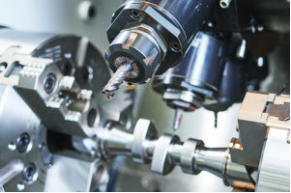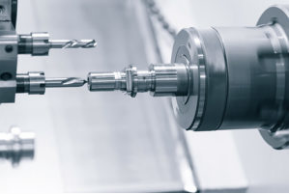Hotest Articles

Computer Numerical Control Machining, more commonly known as CNC Machining, is a broadly used manufacturing technique that relies on various tools—such as mills, lathes, and drills—to subtractively manufacture high-precision parts. As a digital manufacturing solution, CNC Machining produces parts based on CAD designs and can achieve extremely high tolerances if needed, making it suitable for demanding applications in the aerospace, automotive and industrial sectors—to name a few.
When using CNC Machining—whether you are using the technology in-house or are working with professional rapid prototyping or CNC machining shop, such as GUAN SHENG—many of the most effective cost-saving decisions take place in the design stage, before the actual production takes place.
A general rule to remember with CNC Machining is that the faster the machining time, the lower the production costs. Thankfully, if you are on a strict budget, there are several measures that can be taken to reduce the price of CNC Machining. Here are some of our top cost-saving tips for the CNC Machining process:
Material Selection
There are a couple of helpful tips when making your material selection for CNC Machining which can dramatically influence the cost of producing a part.

First and foremost, choosing a CNC Machining material that has better machinability is key to minimizing costs. Aluminum, for instance, is a metal with good machinability, meaning it can be cut more efficiently (read: quickly) than metals with a lower machinability rating, such as steel. If you’ve been following the golden rule of CNC Machining, you’ll remember that faster production times lead to lower costs, so choosing a material that can be cut, milled and drilled faster will help keep costs low.
Also important when choosing a CNC Machining material is ensuring that the size of the blank you are working with is suitable for the product being created. This tip is helpful no matter what material you are working with: raw material blocks should be at least 0.125” larger than the final part in each dimension, but should not be much larger than that to avoid unnecessary material waste and material costs.
Radii Selection
Most of the cost-saving measures to be taken for CNC Machining happen in the design stage, where various decisions can lead to lower or higher production costs. For instance, integrating radii with larger diameters means that parts can be produced faster and thus, more cost-effectively.
In other words, integrating a large radius at corners and other points of the component enables manufacturing companies, like GUAN SHENG, to utilize larger cutting tools, which, as common sense would suggest, work faster than smaller cutting tools.
Similarly, if lowering costs is a top priority, it is important to stick to a single radius when designing a part, a tip that we’ll elaborate on further below.
Tool Changes
The CNC Machining process is not only dictated by the time it takes to work the material blank; it also consists of machine prep time and tool changes, which can amount to a significant portion of the process if planned poorly.
That’s why, when designing a part for CNC Machining, it is important to minimize the tool changes required in the process. This entails sticking to the same dimensions—including internal corner radii, holes, etc.—throughout the part as much as possible.
Maintaining the same tool dimensions for a given part leads to fewer tool changes by the CNC Machine operator, which can, in turn, lead to drastically lower production times and costs. It also facilitates the CNC Machining planning process, which also contributes to faster production and turnaround times.
Tolerances
When sending a part to a professional manufacturer or rapid prototyping service, it is vital to provide the tolerance requirements for a given part so that the CNC Machine operator knows what degree of precision is required.
Though it might be appealing to ask for the tightest tolerances possible for the entirety of a part, it is important to remember that higher tolerances are accompanied by a higher price tag, as the rotations per minute (RPM) must be decreased to meet tighter tolerances, incurring longer production times.
Taking that into account, companies can keep costs low by sticking to standard tolerances as much as possible and only integrating tighter tolerances were critical. GUAN SHENG maintains a standard tolerance of +/- -.005” for metal parts and +/-.010” for plastic parts, so customers can still count on high quality and precise parts.






